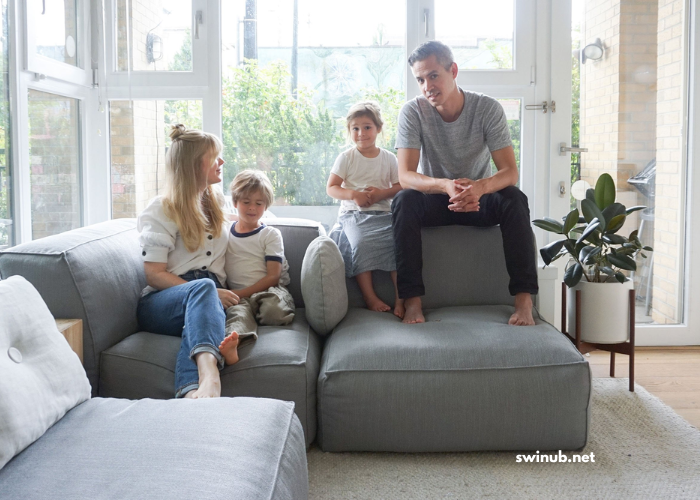In today’s fast-paced world, the constant pursuit of more—more possessions, more commitments, more distractions—can leave us feeling overwhelmed, stressed, and disconnected from what truly matters. Minimalist living offers an antidote to this modern predicament by focusing on simplifying one’s life to what is essential, valuable, and fulfilling. Embracing minimalist living doesn’t mean sacrificing joy or luxury; rather, it means making space for what truly adds value, leading to a life that is not only simpler but also richer and more meaningful. This article explores the philosophy of minimalist living, its benefits, and practical steps for adopting a minimalist lifestyle that promotes mental well-being, financial freedom, and emotional fulfillment.
What Is Minimalist Living?
Minimalism is more than just a style of home decor or an aesthetic choice—it is a mindset and a way of life that encourages prioritizing quality over quantity. Rooted in the idea that less is more, minimalist living challenges individuals to let go of excess possessions, avoid unnecessary distractions, and focus on the things that truly add meaning to their lives.
Minimalism is about curating your life intentionally. It involves reducing physical clutter, but it also extends to emotional and mental clutter. By simplifying your environment, commitments, and habits, you can create more space for personal growth, meaningful relationships, and fulfilling activities.
The Origins of Minimalism
While the minimalist movement gained significant momentum in the 21st century, the concept has deep philosophical roots. In the early 1900s, influential figures like Henry David Thoreau and Mahatma Gandhi emphasized the importance of simplicity and living with less to achieve greater spiritual and personal freedom. The modern minimalist movement, however, began to take shape in the late 1990s and early 2000s, with figures like Joshua Fields Millburn and Ryan Nicodemus (also known as The Minimalists) advocating for a decluttered, intentional way of life.
Today, minimalism has evolved beyond just owning fewer items. It encompasses a mindset shift, where the focus is on living with intention, embracing quality over quantity, and fostering a greater sense of mindfulness.
The Benefits of Minimalist Living
Adopting a minimalist lifestyle offers a variety of benefits that go beyond just having a tidy home. Here are some of the key advantages:
1. Mental Clarity and Reduced Stress
One of the most immediate benefits of minimalist living is the reduction of mental clutter. A cluttered home can contribute to feelings of stress, anxiety, and overwhelm. By reducing physical clutter, you can experience a sense of calm and clarity. When you stop surrounding yourself with excess belongings, it frees up your mental space to focus on what matters most.
Moreover, minimalism encourages mindfulness—a state of being present in the moment—which can enhance your ability to manage stress and improve emotional well-being.
2. Financial Freedom
Minimalist living often leads to reduced spending. By carefully evaluating the things you purchase and letting go of impulse buying, you can save more money and avoid accumulating debt. Instead of spending on items that add little value, minimalists focus on investing in experiences, quality possessions, and personal growth.
With fewer things to maintain and replace, the long-term financial benefits of minimalism become clear. This financial freedom allows you to prioritize saving, travel, or pursue hobbies that bring joy and fulfillment.
3. Improved Focus and Productivity
When you have fewer distractions, it becomes easier to focus on your goals and tasks. Minimalism helps eliminate the excess—whether it’s too many material possessions or too many commitments—so you can dedicate your time and energy to what really matters. By embracing a simpler lifestyle, you can improve productivity in both your personal and professional life.
4. More Time for What Truly Matters
In a world where everyone seems to be rushing from one task to the next, minimalist living encourages slowing down and being intentional with your time. By prioritizing your most important activities, you can create more space for hobbies, personal growth, and quality time with loved ones.
A minimalist approach to time management allows you to enjoy a fuller life by aligning your actions with your values.
5. Environmental Impact
Minimalism can also contribute to a more sustainable lifestyle. When you buy less and consume less, you reduce your environmental footprint. This conscious approach to living can have a positive impact on the planet, from reducing waste to lessening the demand for mass production and overconsumption.
How to Embrace Minimalist Living
Adopting a minimalist lifestyle may seem daunting at first, but it is a gradual process. Minimalism is not about perfection or rigid rules; it’s about making mindful choices and embracing the freedom that comes with living intentionally. Here are some practical steps to help you embrace minimalist living:
1. Declutter Your Physical Space
The first step in embracing minimalism is to declutter your home and workspaces. This can be an overwhelming task, but it doesn’t have to be done all at once. Start small by tackling one room, drawer, or area at a time.
Ask yourself key questions when deciding what to keep or discard:
- Does this item serve a practical purpose?
- Does it bring me joy or add value to my life?
- Do I really need it, or can I let go of it?
Once you have decluttered your space, implement strategies to maintain a clutter-free environment. Consider adopting the “one in, one out” rule, where you commit to getting rid of one item each time you acquire something new. This prevents unnecessary accumulation over time.
2. Simplify Your Wardrobe
A minimalist wardrobe, often referred to as a “capsule wardrobe,” consists of versatile, timeless pieces that can be mixed and matched to create a variety of outfits. Focus on quality over quantity, choosing items that are durable, comfortable, and align with your personal style.
By curating a small collection of clothing that you truly love and wear regularly, you can eliminate decision fatigue and reduce the time spent on laundry, shopping, and organizing your clothes.
3. Prioritize Quality Over Quantity
Minimalism is not about depriving yourself; it’s about making intentional choices. Rather than accumulating more items, invest in high-quality products that are built to last. Whether it’s furniture, technology, or clothing, choose items that you value and that align with your needs.
By focusing on quality, you’ll find that you need fewer things, and those you do own will serve you better in the long run.
4. Be Intentional with Your Time
Time is one of the most valuable resources we have, and minimalism encourages us to be more intentional with how we spend it. Evaluate how you’re currently spending your time and identify areas where you can simplify.
Set clear priorities based on your values, and let go of commitments or activities that don’t contribute to your overall well-being. Create boundaries to protect your time, and focus on the activities that bring you joy, fulfillment, and purpose.
5. Embrace Minimalism in Relationships
Minimalism isn’t just about material possessions; it also applies to your relationships. Focus on nurturing deep, meaningful connections with those who truly matter in your life. Let go of toxic relationships or those that drain your energy without adding value.
Surround yourself with people who support your growth and align with your values, and create space for genuine connection and quality time together.
6. Practice Mindfulness and Gratitude
Minimalism encourages a shift in mindset—moving from a state of constant wanting to one of appreciating what you already have. Practicing mindfulness and gratitude can help you embrace a minimalist approach to life. Take time each day to reflect on what you’re grateful for and savor the small moments.
Mindfulness practices like meditation or journaling can help you become more present, reducing stress and promoting a sense of inner peace.
Common Myths About Minimalism
Despite the numerous benefits of minimalist living, there are still several misconceptions about the lifestyle. Let’s address some common myths:
1. Minimalism Means Living Without Anything
One common myth is that minimalism requires giving up all possessions and living in an empty, sparse space. In reality, minimalism is about owning fewer things, but it doesn’t mean you have to live in a sterile environment. It’s about making intentional choices that allow you to focus on what truly matters.
2. Minimalism Is Only for Young, Single People
While minimalism may be more visible in young, single communities, it’s a lifestyle that can benefit people of all ages, family structures, and stages of life. Families, couples, and older adults can also adopt minimalist principles to create a more peaceful, fulfilling life.
3. Minimalism Means Being Miserly or Cheap
Minimalism is about intentional spending, not being cheap. It’s about spending money on things that truly enhance your life rather than acquiring unnecessary items out of habit. By focusing on quality and value, you can live a richer, more meaningful life without overspending.
Conclusion
Minimalist living offers a powerful antidote to the excess and clutter that often defines modern life. By embracing simplicity and intentionality, you can create more space for the things that truly matter—whether it’s your relationships, personal growth, or creative pursuits. Minimalism isn’t about deprivation; it’s about making room for a fuller, richer life.
Start small, declutter your physical space, and focus on what brings you joy and fulfillment. Over time, you’ll find that less truly is more, and the simplicity you create will lead to a more meaningful, intentional existence.


